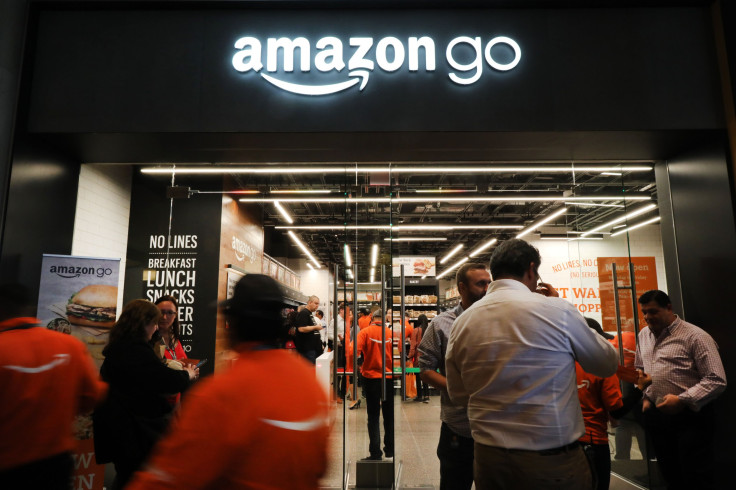Amazon Ramps Up Its Physical Retail Plans -- Including Cashier-less Grocery Stores

The rumor mill has switched into high gear when it comes to Amazon.com (NASDAQ:AMZN) and its relentless push into physical retail. Earlier this month, the e-commerce giant confirmed that it will be opening a line of grocery stores next year under a different name than the Whole Foods Market chain it acquired in mid-2017. This confirmed reports that surfaced back in April.
It appears that Amazon is expanding its push into retail in another direction as well. The company is reportedly planning an expansion of its Amazon Go concept stores, which allow customers to take items from the shelves and leave the store -- foregoing the usual checkout process. Amazon has been testing the tech-savvy shopping outlets for nearly three years, and it appears the company is preparing for a wider rollout.
No checkout lines
The company is planning on a massive expansion of its Amazon Go stores, which will take several forms. It's planning not only to open a greater number of stores but also to expand the technology into larger locations as early as the first quarter of 2020.
Amazon has plans to open a number of new supermarkets and kiosks equipped with Amazon Go technology, according to a recent report in Bloomberg. Until now, the company has focused on a few smaller, convenience-type stores that let shoppers leave without standing in a checkout line (more on that below). Amazon is also considering licensing its cutting-edge technology to other retail chains.
This follows earlier reports that the company is opening a larger location equipped with its technology. Amazon confirmed that its team is "running internal tests" at a much larger store in the Capitol Hill neighborhood of Seattle. Permit filings obtained by GeekWire suggest the retail space is more than 10,000 square feet, significantly larger than existing Go stores, which range from 1,500 to 3,000 square feet.
What is Amazon Go?
Amazon has been working on technology that eliminates the need for cashiers and checkout lines, a project that began in 2016. The company's Amazon Go stores are the fruits of its labors. Each location is blanketed with a variety of cameras and sensors that automatically detect when an item is removed from the shelf.
Shoppers with an account gain access to the store using an Amazon app that has already linked to an approved payment method. Using a combination of weight detectors, computer vision, sensor fusion, and artificial intelligence (AI), the system tracks customers and the items they take from the shelves, creating a virtual register tape as they shop. A customer then leaves the store with his or her purchases, and a digital receipt is sent to the app.
There are currently 21 Amazon Go stores open, with three more confirmed to be launching soon.
Bringing down the cost
Since the first Amazon Go store debuted to the company's employees in 2017, Amazon has been working to streamline the technology and lower the price tag for the system. The hardware in the company's flagship store in Seattle alone reportedly cost more than $1 million, though Amazon itself has been tight-lipped about the amount.
With the razor-thin operating margins typical in most grocery stores, the tech giant will need to make this technology more cost-effective to install and operate in order for it to be appealing to other retailers or to make a massive expansion by Amazon worthwhile.
Based on what we know about the company, Amazon probably has that well in hand.
John Mackey, CEO of Whole Foods Market, an Amazon subsidiary, is a member of The Motley Fool's board of directors. Danny Vena owns shares of Amazon. The Motley Fool owns shares of and recommends Amazon. The Motley Fool has a disclosure policy.
This article originally appeared in The Motley Fool.





















